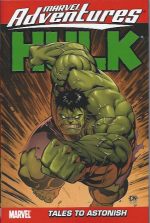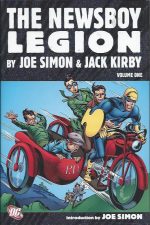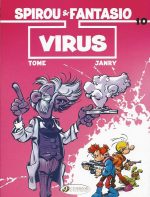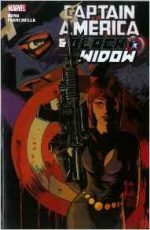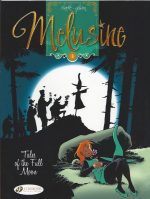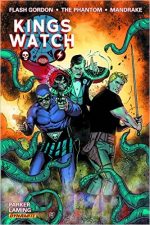
By Jeff Parker, Mark Laming & various (Dynamite Entertainment)
ISBN: 978-1-60690-486-2
Like so many other old fogies and devoted fanboys, I was convinced that I was going to hate this latest reconstruction of three of the oldest characters in comics. The newspaper strip triumvirate of Flash Gordon, Mandrake the Magician and particularly The Phantom were in many ways the blueprint for all comicbook superheroes who followed them, and as major properties had been re-imagined many times over the years, with varying degrees of reverence and success…
By most lights Flash Gordon is the most influential comic strip in the world. He debuted on Sunday January 7th 1934 (with the superb Jungle Jim running as a supplementary “topper†strip) as an answer to the revolutionary, inspirational, but rather clunky Buck Rogers strip by Philip Nolan & Dick Calkins (which also began on January 7th, five years earlier). Raymond, however, added two welcome new elements to the wonderment; Classical Lyricism and astonishingly seductive visuals.
Where Buck mixed traditional adventure and high science concepts, Flash Gordon reinterpreted Fairy Tales, Heroic Epics and Mythology, spectacularly draping them in the trappings of the contemporary future, with varying ‘Rays’, ‘Engines’ and ‘Motors’ substituting for spells, swords and steeds – although there were also plenty of those – and exotic craft and contraptions standing in for Galleons, Chariots and Magic Carpets.
Most important of all, the sheer artistic acuity of Raymond – his compositional skills, fine line-work, eye for sumptuous detail and just plain gift for drawing beautiful people and things – swiftly made this the strip that all young artists swiped from.
When original-material comicbooks began a few years later, dozens of talented kids weaned on the strip’s clean-lined, athletic Romanticism entered the field and their interpretations of Raymond’s mastery became a ticket to future success in the field of adventure strips. To be fair almost as many mimicked Milton Caniff’s expressionistic masterpiece Terry and the Pirates (and to see one of his better disciples check out Beyond Mars, illustrated by the wonderful Lee Elias) and they didn’t fare too badly either…
For over a decade sheer escapist magic in a Ruritanian Neverland, blending Camelot, Oz and every fabled paradise that promised paradise yet concealed hidden vipers, ogres and demons, enthralled the entire world, all cloaked in a glimmering sheen of sleek art deco futurism. Worthy adversaries such as utterly evil, animally magnetic Ming, emperor of a fantastic wandering planet; myriad exotic races and fabulous conflicts offered a fantastic alternative to the drab and dangerous real world and made their own mark on the landscape of popular culture…
Regarded by many as the original American superhero, Mandrake the Magician debuted on 11th June 1934 (although creator Lee Falk had originally tried to sell the strip a decade previously), illustrated with effective understatement by the superb Phil Davis.
Educated at the fabled College of Magic in the Himalayas, the suave sorcerer roamed the world with his faithful African friend Lothar and his beautiful companion (and finally, in 1997, bride) Princess Narda of Cockaigne; solving crimes and fighting evil. Star of stage, screen (large and small), radio and a thousand forms of merchandising, Mandrake has always been one of the top guns of strip comics powerhouse King Features Syndicate.
In the 17th century a British sailor survived an attack by pirates and, washing ashore in Africa, swore on the skull of his murdered father to dedicate his life and that of all his descendents to destroying pirates and criminals. The Phantom fought crime and injustice from a base deep in the Jungles of Bengali, and throughout Africa was known as the “Ghost Who Walksâ€; considered an immortal avenger by the credulous and the wicked. Down the decades one hero after another has fought and died in an unbroken dynastic line, in a never-ending battle…
Lee Falk created globe-trotting Jungle Avenger at the request of his publishers, who were already making history and public headway with his first strip sensation Mandrake. Although technically not the first ever costumed hero in comics, The Phantom was the prototype paladin to wear a skin-tight body-stocking, and the first to have a mask with opaque eye-slits.
He debuted on February 17th 1936 in an extended sequence pitting him against a global confederation of pirates called the Singh Brotherhood. Falk wrote and drew the daily strip for the first two weeks before artist Ray Moore took over the illustration side. The Sundays feature began in May 1939.
Fan favourites for generations, the trio periodically made the sideways move into comicbooks, but never really teamed up until 1986 when TV cartoon series Defenders of the Earth updated and united all three and their support teams into a league resolved to save the world from alien invasion in the distant future of 2015 AD. This iteration had its own short-lived Marvel/Star Comics funny book series.
In 2013, the stars realigned again and Licensed-Properties specialist Dynamite Entertainment produced a remarkably engaging retro-futurist thriller which managed to pay due homage to the past iterations whilst opening the characters up for the latest generation of frantic fans. In the 5-issue miniseries Kings Watch scripter Jeff Parker and illustrator Marc Laming (with the invaluable assistance of colourists Jordan Boyd and letterers Simon Bowland) crafted a fast-paced, suspenseful and, most importantly, fun-filled yarn telling a big, bold, bombastic blockbuster story which also set up the three leads for new follow-up series…
Jeff Parker has worked in all aspects of the industry but is probably best-known for his wide variety of comics scripts, including Aquaman, Bucko, Batman ’66, Agents of Atlas, Spider-Man: 1602, X-Men: First Class, many of Paradox Press’ Big Book of… and more…
British collaborator Marc Laming is an unashamed tea-drinker who has flitted hither and yon throughout the business since 1990, alighting occasionally and only to superbly render such varied projects as bits of Revolver, American Century, The Dreaming, Grindhouse, Planet Hulk, Fantastic Four, Uncanny Avengers and many others.
The story here begins with the world beguiled by lights in the sky and wracked by communal nightmares of invading monster armies. As the ancient and vile Cobra cult searches ruthlessly and relentlessly for a supernal crystal that could spell doom for Earth, in East African Bangalla, in a grandiose hermitage in California and on a palatial estate in Connecticut, three amazing individuals ready themselves to fight the battle of their lives…
Rather than have me ruin the fun for you, just thrill in anticipation to the knowledge that a thrill-addicted playboy, a broken sorcerer and sham hero crushed by the weight of years of service will somehow become the planet’s saviours after intergalactic warlord Ming the Merciless acquires the enigmatic Kings Watch artefact and unleashes the hordes of the empire of Mongo upon an unsuspecting helpless humanity…
The ever-popular Bonus Features include a full Parker script, attendant script-to-completed art production pages and a gallery of covers and variants by Laming, Adam Street and Ramón K. Pérez but the real prize is the superbly fast-paced action-romp which easily mixes monsters, aliens, rocket-ships, mad doctors, feisty capable women, wicked villains, exotic locales and epic battles into a ripping yarn every fan of fantasy adventure will be unable to resist.
Flash Gordon © 2014 King Features Syndicate, Inc. ™ Hearst Holdings, Inc. Mandrake the Magician and The Phantom © 2014 King Features Syndicate, Inc. ™ Hearst Holdings, Inc. All rights reserved.


